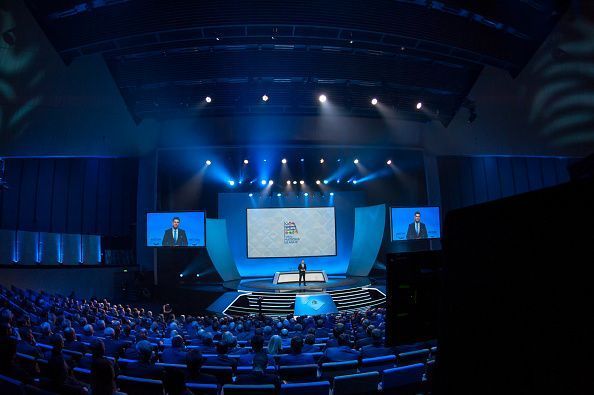
UEFA Nations League Explained: Preview, Groups, Format, Rules, Predictions and more
The league phase of the UEFA Nations League tournament for the year 2018-2019 starts from 6th September 2018. The UEFA Nations League is a biennial tournament for all the 55 football associations of UEFA and will also be used as a secondary means for qualifying for UEFA Euro 2020. Still, sounding confusing? Yes, it is.
So to break it down, UEFA have come up with the notion of Nations league in order to replace the (meaningless) international friendlies with a new format which will involve the strong powerhouses in Europe battling it out amongst themselves while also providing an opportunity for smaller nations to qualify for the coveted UEFA Euro 2020.
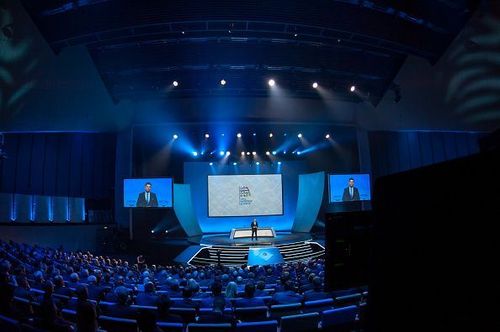
The format:
The tournament will be held in two separate phases: a league phase which will be played over three international breaks in September, October and November and the Nations league finals to be played in the summer of June 2019.
The 55 associations have been divided into 4 leagues according to their UEFA league coefficients (prior to 2018 World Cup qualifiers). Here's how the Leagues and Groups look:
League A
Group 1: Germany, France, Netherlands
Group 2: Belgium, Switzerland, Ireland
Group 3: Portugal, Italy, Poland
Group 4: Spain, England, Croatia
League B
Group 1: Slovakia, Ukraine, Czech Republic
Group 2 Russia, Sweden, Turkey
Group 3: Austria, Bosnia and Herzegovina, Northern Ireland
Group 4: Wales, Republic of Ireland, Denmark
League C
Group 1: Scotland, Albania, Israel
Group 2: Hungary, Greece, Finland, Estonia
Group 3: Slovenia, Norway, Bulgaria, Cyprus
Group 4: Romania, Serbia, Montenegro, Lithuania
League D
Group 1: Georgia, Latvia, Kazakhstan, Andorra
Group 2: Belarus, Luxembourg, Moldova, San Marino
Group 3: Azerbaijan, Faroe Islands, Malta, Kosovo
Group 4: Macedonia, Armenia, Liechtenstein, Gibraltar
League A and League B have been drawn in 4 groups of 3 teams. League C has 3 groups of 4 teams and 1 group having 3 teams, whereas League D has 4 groups of 4 teams.
UEFA Nations League Rules
- Each team will play the other teams in their group in two rounds of home and away fixtures.
- In League A, the 4 winners in Groups 1-4 will qualify for the UEFA Nations League finals to be held in June, 2019
- The 4 third placed teams in Groups 1-4 of Group A will be relegated to Group B
- Similarly, in League B, the 4 winners will be promoted to League A and 4 third-placed teams will be relegated to League C.
- In League C, the 4 winners will be promoted to League B. The three 4th placed teams in Groups 2, 3 and 4 will be relegated to League D along with the worst 3rd placed team in Groups 1-4 (Group 1 will have only 3 teams)
- The 4 winners of League D will be promoted to League C.
- The UEFA Nations League finals will be held in any one of the 4 winners in Groups 1-4 of League A which will have 2 semi-finals, 3rd place match and the Final
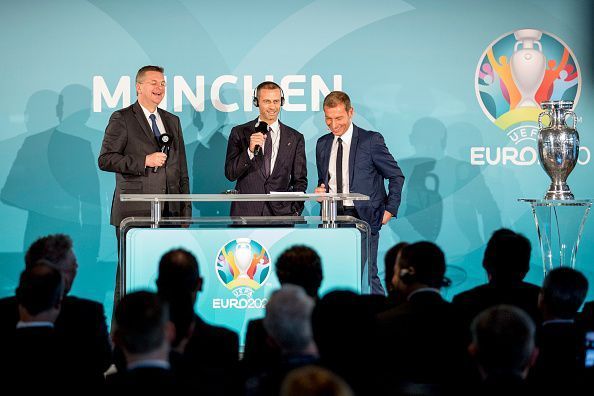
What does it mean for the UEFA Euro 2020
All the 55 member associations will be eligible to qualify for UEFA Euro 2020 irrespective of their performances in the UEFA Nations league though.
The draw for the UEFA Euro qualifiers will be held on December 2, 2018, wherein the 55 teams will be divided into ten groups. Five groups will have five teams and the remaining five groups will have six teams. The top two teams from each group will automatically qualify for UEFA Euro 2020. So, a total of 20 out of 24 teams will qualify via the Euro qualifications round. The remaining 4 teams for UEFA Euro 2020 will be decided based on the performance of the teams in UEFA Nations League
How does UEFA Nations League help in qualifying for UEFA Euro 2020?
16 teams will be selected based on the UEFA Nations league performance to compete for the UEFA Euro 2020 playoffs.
The selection criteria for these 16 teams will be based on a bottom-up approach, meaning that all the 16 Group Winners are automatically eligible for the play-off rounds.
In case, the said group winner has already made it to UEFA Euro 2020 qualifications alone, the next best team in the Group will be given preference. In case all teams in a League are all qualified, the best team from the next lower league would be selected.
A similar approach would also be followed in determining the path of each of the 16 teams with a path being formed with 4 teams from the same league. If, somehow more than four teams qualified for the playoffs in a given league, then there will be a draw which decides teams will participate in the playoff path of that league. The remaining teams will be drawn into paths with teams of higher leagues to ensure that the group winners do not have to compete with teams from a higher league.
The 4 playoff paths will have two single-leg semi-finals and a final, with the 4 winners joining the already qualified 20 teams.
The predictions
League A
Group 1: This is literally the Group of Death out of all the groups with three heavyweights in 2018 World Cup winners France, 2014 World Cup winners Germany and 2010 World Cup Runners-up/2014 World Cup 3rd place Netherlands. Though Germany were knocked out of the group stage in this year's World Cup, they have enough quality to overcome the likes of Stephan deLigt and Frenkie deJong, but on current form, France look clear favorites.
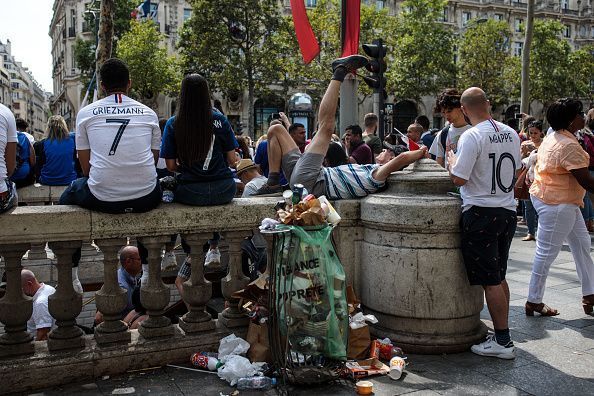
Group 2: This group has this year's World Cup 3rd place winners Belgium along with consistent performers Switzerland and giant killers Iceland. With the might of Hazard and Lukaku in the team, Belgium are likely to top this one, but Iceland are known to spring up a surprise every now and then.
Group 3: The UEFA Euro 2016 winners will be willing to forget the performance in the 2018 World Cup behind and start a successful defence to the title which they won two years back. They will, however, be without the services of Cristiano Ronaldo who has taken time off to concentrate on his club with Juventus. Italy under Roberto Mancini, with the right mixture of youth and experience, should come out ahead of Portugal and Poland in this group
Group 4: This is perhaps the second toughest after Group 1. Spain under Luis Enrique will be looking to go up against this year's Runners-up in Croatia and Semi-finalists England. This will be a tightly contested group, but if Luis Enrique can rally his players and get the best out of them, they should win this group.
Leagues B, C and D:
League B features the likes of 2018 World cup surprise packages Russia, Sweden and Denmark. Edin Dzeko led Bosnia and Gareth Bales led Wales should provide stiff competition to the above-mentioned teams along with Ukraine, Turkey and Austria. Favorites- Ukraine, Sweden, Bosnia, Denmark.
League C includes the 2004 Euro Winners Greece along with Slovenia, Serbia and Scotland, who should win their respective groups. Both the League C and D teams will, however, look to win their group, in order to reach the Euro play-off rounds
What does it mean for the rest of the World?
- CONCACAF Region: Similar to the UEFA Nations league, the 40 member associations of North, Central America and the Caribbean islands will participate in the CONCACAF Nations League. The 6 teams which participated in the 2018 World Cup qualifiers (Mexico, Costa Rica, Panama, Honduras, USA, Trinidad and Tobago) will directly be drawn in League A. The other teams will play two home and away games to decide the tiers for dividing into groups. The top 6 will join the already qualified top 6 teams in League A. The next 16 subsequent teams and the last 12 teams will form Leagues B and C respectively. Moreover, the top 10 teams will also get a shot at the CONCACAF Gold Cup.
- CONMEBOL Region: The home to powerhouses in Brazil, Argentina, Chile and Colombia has just 10 member associations who play each other over gruesome 36 rounds to qualify for the Fifa World Cup. However, there has been no announcement yet for a Nations league as only 10 teams are part of the federation. A possible joint tournament with CONCACAF as has happened in Copa America will be on the cards though. All the South American teams will however showcase their rich talent through International friendlies against teams from other Continents.
- Asia (AFC) and Africa (CAF): For Africa, the international breaks, provide an opportunity to qualify for the 2019 Africa Cup of Nations in Cameroon which has been expanded to 24 teams. The Asian teams, after the Asian games will be looking forward to prepare for the 2019 Asian Cup in January. As of now, there have no Nations league announcements for Asia and Africa, but such a league would make complete sense for the mid-tier and bottom-tier countries and give them more exposure on a consistent basis.
- Oceania (OFC): The smallest federation organises the OFC Nations Cup every 4 years which doubles up as a qualifier for the World Cup, with International Friendlies providing opportunities against tougher opposition.
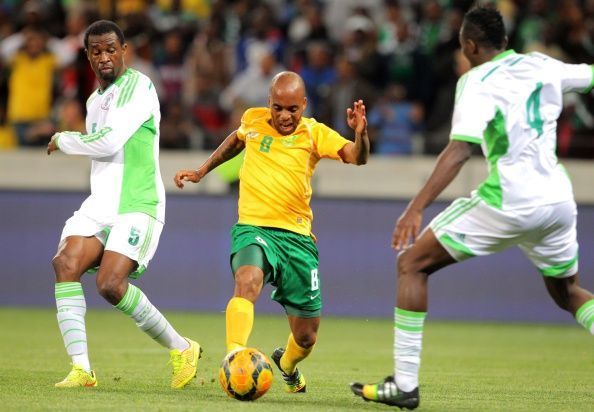
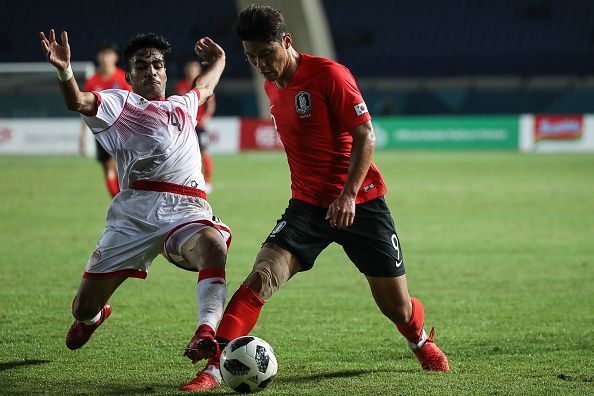
The emergence of a Global Nations League
So, the exact details of such a tournament are not available yet, but there have been rumblings of such a Global Nations League once the announcement was made for UEFA Nations League. The basic premise of such a league would remain the same with each team playing other teams in their group.
Based on the current world ranking and standard of football, a sample structure would have each group having 4 teams with the topmost League A having three top divisions from Europe, two from South America and one each from CONCACAF, Asia and Africa. Each of the 8 winners will then participate in a Finals tournament to decide the winner based on a knockout format.
Well, clearly the pitfalls of such a league constitute too much of a burden on the already congested Football calendar and the amount of travelling that would be required for teams based on different continents. The upside is there in terms of revenue generated for Fifa, but also an opportunity for the smaller teams to go up the ladder through a promotion and relegation system and at least have a chance of one day competing with the competitive teams. For all of the teams, this provides the opportunity to compete with rivals in a meaningful way and also qualify for the Continental Cups.
Let's wait and watch how does the UEFA Nations League and CONCACAF Nations League perform and hopefully, if they generate enough interest, maybe one day we will get to see the Global Nations League in action.